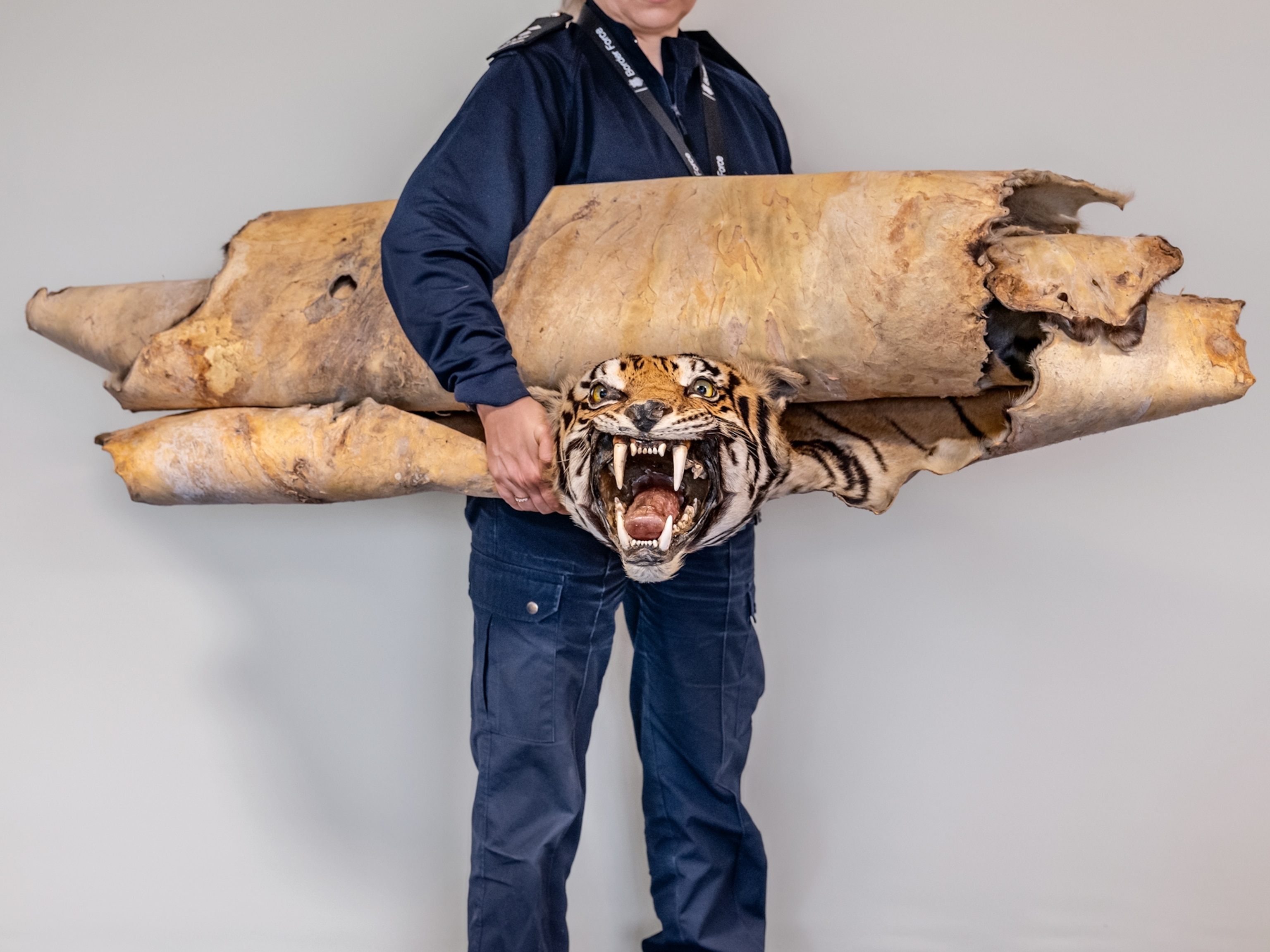
Cowboy boots sold in the U.S. fueled the decline of pangolins
As pangolin leather became unavailable, sellers replaced it with leather from a giant Brazilian fish—threatening that species as well.
Pangolins are the world’s only scaled mammal, and that conspicuous distinction has contributed to their status as the world’s most trafficked mammal. Poachers target pangolins throughout Asia and Africa primarily for their scales, which are used as an ingredient in traditional Chinese medicine. Research indicates that hundreds of thousands—if not millions—of pangolins are killed each year.
But according to a new report in Conservation Science and Practice, scales aren’t the only reason people covet the scaly anteaters—and Asia hasn’t always been the only center of demand for them. Before 2000, the United States was a major importer of pangolin skins, which were used to make exotic leather cowboy boots, belts, and wallets.

Since 2017, all eight pangolin species have been banned from international trade. As pangolins disappeared, the study authors note, U.S. importers began replacing pangolin leather with leather from arapaima, a threatened Amazonian fish that can grow more than nine feet long. Despite their biological differences, both species’ skin, when tanned, exhibits a similar diamond pattern. (Read more about how poaching is pushing the pangolin toward extinction.)
If displaced demand for pangolin leather goes unchecked, the authors warn, overexploitation of arapaima—already a significant problem throughout much of the fish’s Amazon basin range—may become an even more serious problem.

“Considering the huge historic popularity of pangolin in the U.S., there is likely a big market there for arapaima,” says Sarah Heinrich, a doctoral candidate in conservation science at the University of Adelaide, in Australia, and lead author of the findings. “The trade may quickly get out of hand.”
Many conservationists dismiss the leather trade as insignificant in its contribution to the decline of pangolins and as irrelevant today. But Dan Challender, a postdoctoral research associate at the University of Oxford, in the U.K., who specializes in pangolins and who was not involved in the current work, points out, “The trade in pangolin leather was a threat to the species, for sure.”
Quantifying the role the leather trade played in pangolins’ historic decline is hampered by a lack of reliable international trade data. Heinrich tried to fill that gap by analyzing U.S. Fish and Wildlife Service legal and illegal trade records from 1999 to 2015. She found an estimated 21,411 pangolins involved in 163 pangolin skin imports, most of which took place before 2000, when the international community established a zero-export quota for Asian pangolins. Arapaima, on the other hand, trended in the opposite direction: Of the 130 records involving 5,524 arapaima that Heinrich found, almost all took place after 2011, and trade in arapaima leather has grown significantly since then.
For a nine-month stretch in 2017 and 2018, Heinrich also tallied 478 eBay listings for pangolin and arapaima leather offered by U.S. sellers, many of whom advertised that they could ship product internationally. Based on Heinrich’s visual assessment and sellers’ descriptions, more than 65 percent of the listings appeared to be genuine, including 168 involving an estimated 476 pangolins and 154 listings involving an estimated 2,873 arapaima. Three-quarters of the apparently genuine listings either violated eBay’s policy ban on all pangolin sales or potentially violated U.S. or international regulations (or violated all three). Unlike pangolins, arapaima can be traded internationally if they have the proper paperwork and their harvest does not adversely affect populations. But eBay forbids international sales of arapaima. (In 2018, eBay joined a coaltion of tech companies working to reduce the online sale of illegal wildlife products 80 percent by 2020.)
All the arapaima leather Heinrich found on eBay originated in Brazil. It’s questionable whether arapaima that go to the U.S. legally are exploited sustainably, according to Leandro Castello, a fisheries ecologist at Virginia Tech, in Blacksburg, Virginia, who was not involved in the new research. An increasing number of Brazil’s arapaima populations are managed sustainably by local communities, he says, but they’re still the exception.
“There’s a lot of information to suggest that arapaima populations are overfished and in trouble in most of the Amazon basin,” he says. “I think the U.S. should think more carefully about the products it allows to be imported.”
Conservationists usually sound an alarm only when a species is in steep decline or in danger of extinction, but Heinrich and her colleagues hope their research will help arapaima avoid being pushed to such extremes by trade. “We’re not trying to say arapaima should not be traded at all,” she says. “What we’re saying is that there’s a market for this species, and if we don’t monitor and intervene in a timely fashion, then arapaima could become threatened by it.”
Precedent exists for such concerns. In the mid-1990s, conservationists encouraged traditional Chinese medicine practitioners to substitute saiga antelope horn for rhino horn, triggering a spike in poaching that reduced saiga antelope populations by 97 percent, according to researchers. Today, lion body parts are increasingly substituted for tiger bone, claws, and teeth, leading some experts to suspect that an uptick in lion poaching in Africa is linked to growing demand for lion parts in Asia.
“The worst-case scenario is that arapaima suffer in the wild as a consequence of actions taken to protect pangolins,” Challender says. “This case study demonstrates the complexity of controlling trade in wildlife, especially when it takes places over different continents, wide geographies, and on a long-term basis.”








